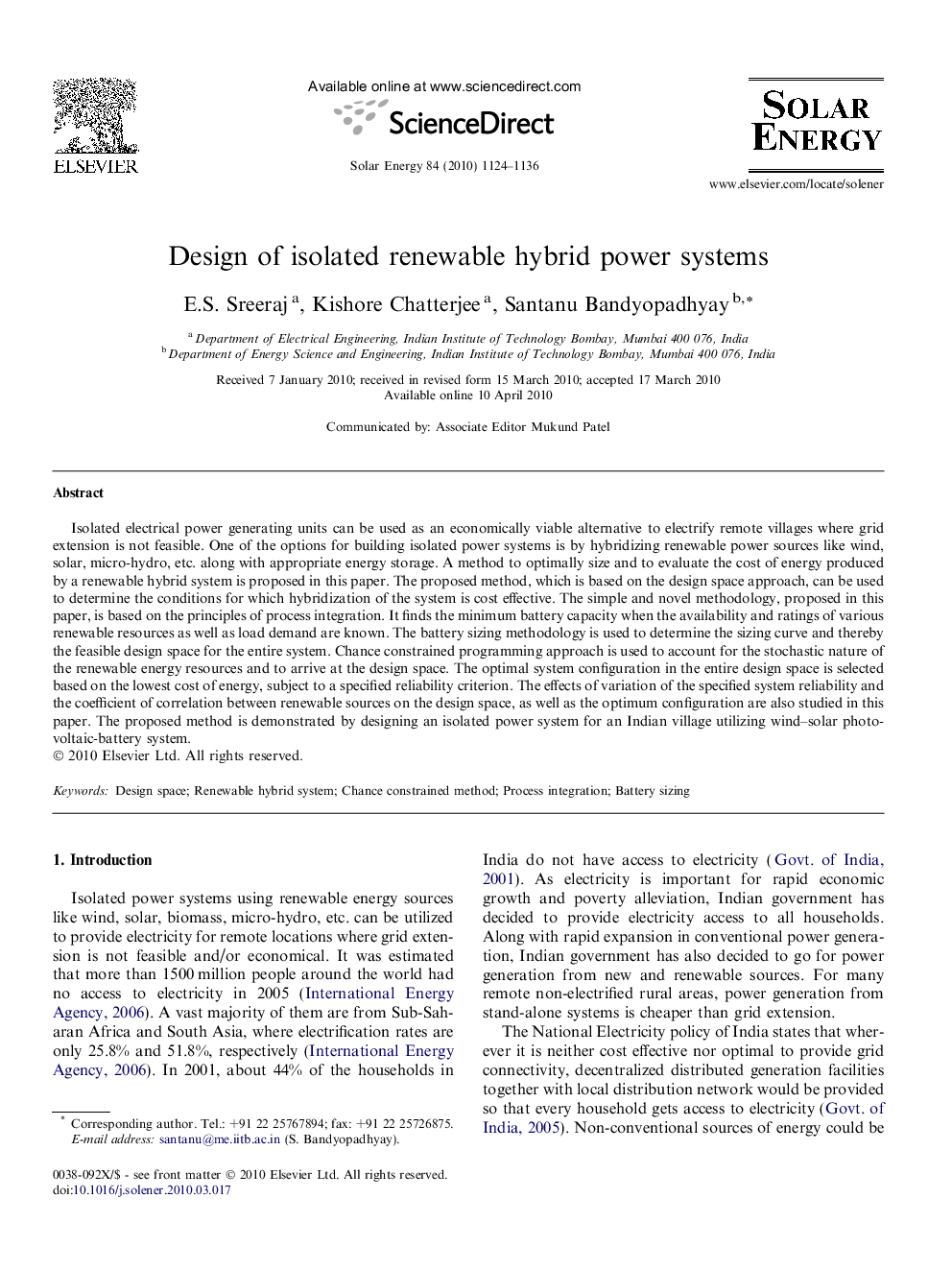| Article ID | Journal | Published Year | Pages | File Type |
|---|---|---|---|---|
| 1551471 | Solar Energy | 2010 | 13 Pages |
Isolated electrical power generating units can be used as an economically viable alternative to electrify remote villages where grid extension is not feasible. One of the options for building isolated power systems is by hybridizing renewable power sources like wind, solar, micro-hydro, etc. along with appropriate energy storage. A method to optimally size and to evaluate the cost of energy produced by a renewable hybrid system is proposed in this paper. The proposed method, which is based on the design space approach, can be used to determine the conditions for which hybridization of the system is cost effective. The simple and novel methodology, proposed in this paper, is based on the principles of process integration. It finds the minimum battery capacity when the availability and ratings of various renewable resources as well as load demand are known. The battery sizing methodology is used to determine the sizing curve and thereby the feasible design space for the entire system. Chance constrained programming approach is used to account for the stochastic nature of the renewable energy resources and to arrive at the design space. The optimal system configuration in the entire design space is selected based on the lowest cost of energy, subject to a specified reliability criterion. The effects of variation of the specified system reliability and the coefficient of correlation between renewable sources on the design space, as well as the optimum configuration are also studied in this paper. The proposed method is demonstrated by designing an isolated power system for an Indian village utilizing wind–solar photovoltaic-battery system.
